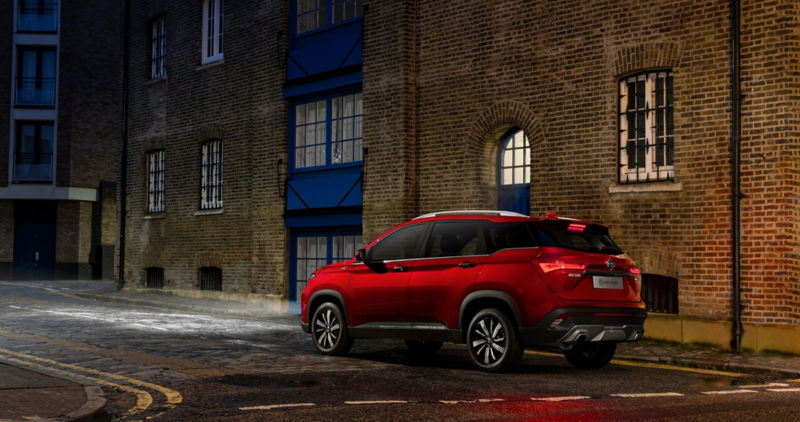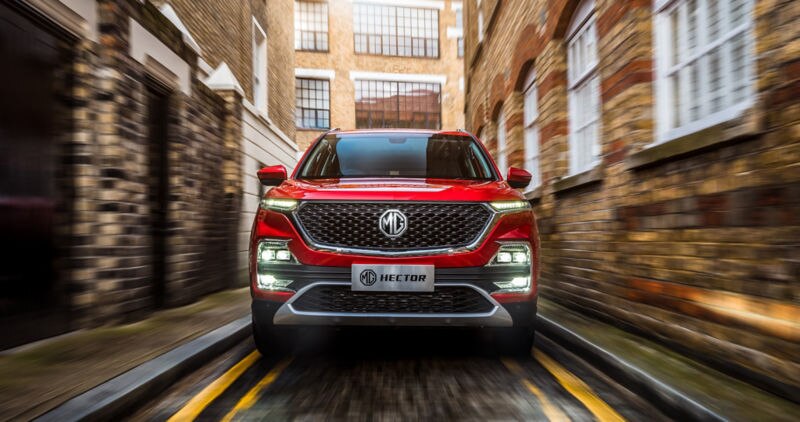MG Motor, the British carmaker made its debut in the Indian car market with the unveiling of its SUV offering MG Hector. The company was founded by an automobile engineer Cecil Kimber in a garage called “Morris Garage”. Born on 12 April 1888, he began working for the car tycoon William Morris (later Lord Nuffield) in 1921 and got the position of general manager of the Morris Garages chain in Oxford a year later. Kimber quickly realized that he could increase the sales revenue by offering special models, and so launched the £268 “Morris Garages Chummy” in 1923, according to The Independent.
In 1926, its production represented 42 percent of the British car manufacturer.

Historical timeline of the company
In 1929, MG (for Morris Garages) moved to a proper factory at Abingdon, and in July 1930 the sports car enterprise that at one point of the time nobody even knew existed, became the MG Car Company, with Kimber as its managing director.
In 1933, the company’s MG K3 Magnette participated in the Mille Miglia, one of the toughest races in the world, and was the first non-Italian marque to take the 1100cc class win.
In 1945, the company launched the MG TC, which sold nearly 2,000 units, the first British Sports Car that Americans crazily started obsessing over.
In 1957, the MG Ex181 set a world record for reaching a speed of 245.64mph. It broke its own record in 1959 by touching a speed of 254.91mph.
The company slid into the SUV segment in 2015 with the launch of MG GS.
The history of acquiring MG
The British automobile industry has been through a rollercoaster ride with a lot of brands going through many ups and downs. Many companies have been shut down and many brands have been sold as well as there has been consolidation among brands.
The company was initially owned by William Morris himself and was later sold to Morris Motors. In the 1950’s Morris Motors and Austin Motors came together to form the British Motor Company (BMC). Jaguar too was a part of it in the 60s.
Later, even BMC merged with Leyland and hence became British Leyland. Leyland owned Rover and Triumph (MG’s biggest rival).
The 1980s saw the downfall of the British automobile industry. The MG plant stopped its production in 1980. In 1982, British Leyland’s subsidiary – Austin Rover helped the MG brand to recover for a short while only to be sold to BMW in 1994. BMW later sold it to the MG Rover group, which eventually came apart in 2005. Following the collapse, Nanjing Automobile of China acquired the MG brand. In 2007, Nanjing itself was acquired by SAIC Motor of Shanghai, which owns it today.
The entry into the Indian market
MG Motor India began its functioning in 2017 as SAIC has acquired the General Motors (GM) plant in Halol, in which it held a stake already. Even the CEO of MG Motor India is ex-GM India CEO – Mr. Raveev Chaba.
The carmaker had an amazing start here with the MG Hector and is going about establishing itself in a measured manner whether it is in setting up a dealer network or, in gearing up for the EV opportunity.
The car brand is trying to gain consumer’s confidence and achieve a solid stand in the market as an innovation and technology leader, which is dominated by Maruti Suzuki and Hyundai, who together account for 70% of all cars sold.
MG Hector, the first car of the iconic British brand owned by SAIC (formerly Shanghai Auto Industrial Corporation), was India’s first connected SUV. It offered various features like remote vehicle control and voice assistant and has been able to attract customers.
The company’s plans for India are quite straightforward, aggressive, and at the same time quite challenging. SAIC is one of China’s largest automobile manufacturers with a huge variety of vehicles. Out of those, MG sells a small hatchback – the MG3, a sedan/notchback – the MG6, and a couple of SUV’s – the ZS and GS. These are sold in the UK as well as China and Thailand.
SAIC’s focus on growth in India is not surprising. After all, India is an integral source of revenue and is a major market that is critical for SAIC to establish itself as a global player. A reputation for being a technology leader will help the Chinese company stand out in the Indian market, which has proved to be the graveyard for an MNC automaker.
Also Read: Ather Energy – The Indian Startup Building Smart And Intelligent Vehicles
The MG brand has a very strong history and MG India has been trying to promote the brand over the past few months. It reached out to MG owners in India and organized a meet and drive in Delhi to announce the return of the brand. It has also been actively doing a lot of social media advertisements including making a series of videos on its YouTube page about the owners of MG cars in India.
The biggest challenge MG will have to face is that even though MG has a deep-rooted heritage in the UK, the brand is currently owned by the Chinese i.e. SAIC. Because of the current tension between China and India, this might have negative consequences, but the more erudite will remember that brands like Volvo are also owned by Chinese (Geely) and the XC60 has recently won the Best Car of the year award. If MG is able to deliver quality products that are well priced, there won’t be any reason why it should not do well in the market.
The Indian market seems to have matured and customers are open to accepting new brands like Jeep as long the product has the right facilities to offer. Today’s flavor in India is compact crossovers or premium hatches and MG Motor India is the right choice for any consumer. SAIC also has the muscle in terms of money to back up the product with a strong network.
On how MG Motor in India will handle the current situation where the whole world is going through Coronavirus pandemic and whether necessary precautions will be taken, Gaurav Gupta, Chief Commercial Officer, MG Motor India, said, “We do expect significant disruption in the supply chain from European and Chinese/Asian suppliers and our sales may get impacted. Our inventory levels have been minimum because of the bookings backlog. We are working towards ensuring that the impact on the end-consumer and our operations is minimized.”
Sales
MG Motor India sold a total of 1,518 units in March 2020, which is a growth of 10.32 percent over sales figures of February 2020. These include 116 units of the MG ZS EV and 1,402 units of the MG Hector. In comparison, the company sold a total of 1,376 units in February 2020 with 158 unit sales for the ZS electric SUV and 1,218 units of the MG Hector. But the point to be noted here is that the company was hit with shortage and complete stoppage in production of components, thanks to the global spread of the Coronavirus pandemic in February. MG Motor India managed to sell 3,130 units in January 2020. No doubt, the company would have had more sales if it hadn’t been for the lockdown, implemented March 23 onwards across the nation to curb the spread of Coronavirus.
Commenting on the same, Rajeev Chaba, President & Managing Director, MG Motor India, said, “Both MG Hector and MG ZS EV have made a mark in the Indian car market. Despite supply chain disruption globally, MG Motor continues to serve its customers. In February, our sales were impacted due to the disruption, while the situation improved during March before the lockdown was announced, resulting in the shutting down of our manufacturing plant.”
Despite the ongoing situation, the company has been taking all the necessary precautions for its employees and ensured that there would be no delay in payments to suppliers and vendors and everything will be completed right on time.
Even before the lockdown was implemented, MG Motor India started taking all the precautions and started a ‘Disinfect & Deliver‘ program under which it made sure that each car is sanitized, social distancing is maintained and there is near-zero contact with customers. MG has ensured to make this a permanent process even after the lockdown is lifted.

